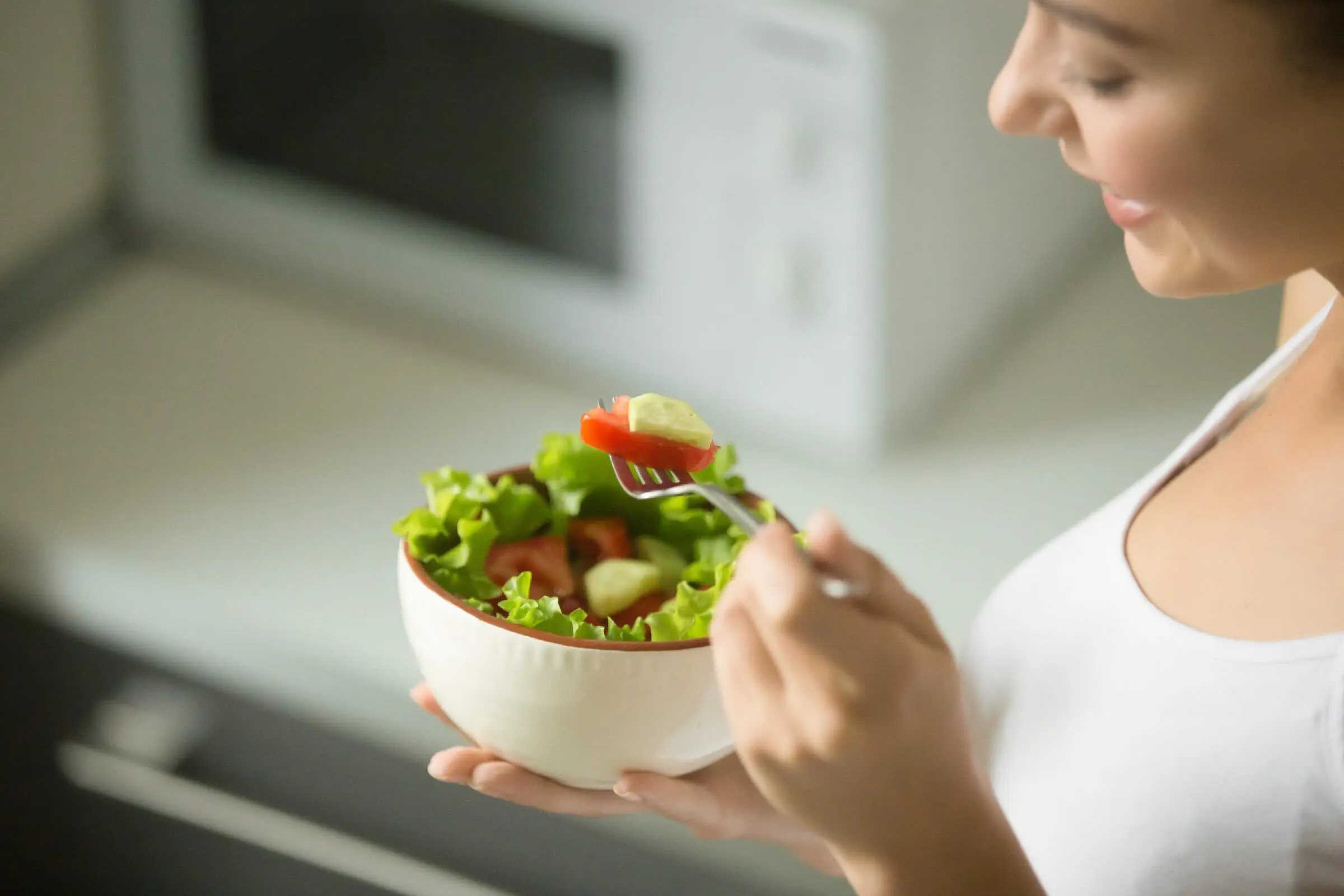The 500 calorie diet plan is a very low-calorie diet that may help you lose weight. Doctors prescribe this diet to overweight people who have a high BMI and excess fat. However, this diet is not for pregnant and breastfeeding mothers.
What is a 500 calorie diet plan?
The 500 calorie diet plan is a type of 5:2 diet also known as The Fast Diet. So, this diet plan suggests a 500 calories food intake per day for two days of a week. In addition, you should limit your food intake to 2000 calories per day for the other five days.
- Firstly, this diet is an extreme kind of low-calorie diet. It also substitutes regular food with liquid supplements.
- Secondly, this low-calorie intake will help your body to use the stored fat.
- Thirdly, if you maintain this diet plan properly, you will be able to lose extra pounds fast.
Finally, research revealed that hypocaloric periodic intermittent fasting might help overweight people slim down. However, more research study is necessary to confirm these facts. We’ll discuss how this diet plan is related to intermittent fasting in later sections.
Who can follow this diet?
People who have a BMI of over 30 must follow a low-calorie diet plan. Under the proper guidance of a nutritional expert or a doctor.
Who should avoid this diet?
Typically, doctors do not suggest people with medical conditions follow VLCD. Also, it is a good idea not to follow any calorie-limited diet under these medical conditions:
- Heart Disease
- Diabetes
- Kidney Conditions
- Gout Pain
- Gallstones
There are plenty of foods that are low in calories. These foods and drinks are known as zero-calorie or low-calorie but are dangerous for the body. Therefore, you must have a concept of what to consume and avoid if you wish to maintain a 500 calorie diet plan.
How much is in a 500 calorie meal?
You need the idea of how much (or exactly how little) is in a 500 calorie meal plan. The USDA found that one slice of pepperoni pizza contains around 250 calories. An apple includes less than 80 calories, while two pieces of deep-fried poultry have around 400 calories.
Finally, You have to figure out how many calories you burn in a day. Following the Harvard Medical School calories burned in 30 minutes articles, a 185-pound person burns 47 calories sitting or reading for an hour.
500 calorie diet what to eat
You can eat non-starchy veggies like carrots, broccoli, beetroot, lettuce, cabbage, and parsnip. These 500 calorie diet foods are low in calories and also filled with nutrition. Besides, these will help you reduce weight without placing your health in danger.
- Salads, and sautéed: Cooked vegetables have more antioxidants than they do when raw.
- Milk and yogurt: Healthy fats versions are extra nutrition that will help maintain hunger.
- Fruits and fruit juices: Make sure that you don’t eat rich GI foods like pineapple, grapes, and mangoes.
- Lean meat and poultry: Keep your immune system and skin healthy, and for growth, and reproductive health.

Foods you should avoid on this diet
Here are foods you should avoid while on a 500 calorie diet plan.
- Fast foods
- Canned foods
- Soft drinks
- Bottled fruit juices
- Dried fruits
Sample 500 calorie meal plan for losing weight
As part of the 5:2 diet routine, you have to be on a 500 calorie meal plan for two days. So, what should you consume?
Breakfast meal plan
| Options | Amount |
| Decaffeinated tea or black coffee without any sugar | 8 ounces |
| Small banana and ricotta cheese | 1 banana and 1 medium bowl of ricotta cheese |
| Hard-boiled egg and wheat bread toast | 1 of each |
Tip: In case you feel hungry before lunch, you can drink a mug of green tea without any sugar.
Lunch meal plan
| Options | Amount |
| Salad with light dressing | 1 medium bowl |
| Blueberries and yogurt | 1 cup |
| Vegetable soup made with any leafy vegetable | 1 cup |
| Grilled chicken or fish, Grilled broccoli, and carrot | 3 oz fish or chicken and 1/4 cup vegetables |
| Lettuce wraps with fish or chicken | 1 wrap with 2 oz of fish or chicken |
Tip: Drink one mug of warm water 20 minutes before lunch to avoid overeating.
Dinner meal plan
| Options | Amount |
| Chicken or mushroom soup | 1 medium bowl |
| Broccoli and grilled turkey or tofu tossed | 1 medium bowl |
| Egg white omelet, mushroom, and spinach | 2 eggs, 5 mushrooms, 1/2 cup spinach |
| Stir-fried vegetables | 1 cup |
Tip: Drink water properly. If you feel hungry, drink a mug of coconut water or veggies juice.
You can select from these options and make a perfect 500 calorie meal plan. Make sure to discuss this with your doctor or a dietitian before beginning a 500 calorie diet plan.
What is intermittent fasting?
Intermittent fasting is one of the most popular health and fitness trends recently. Basically, it is alternating cycles of eating and fasting. It does not say which foods to eat, but rather when should you eat them. Most people fast every day, while they sleep. So, this fasting can be as simple as extending the existing fast a little longer.
To achieve the best weight loss results, you can consume a 500 calorie meal while on intermittent fasting. It does not require you to change any food but rather focus on your mealtime for the best results.
What are the health advantages of intermittent fasting?
Studies on intermittent fasting reveal outstanding health advantages. One vital benefit is that it appears to be easier to pursue than continual calorie limitation. Also, lots of research have shown that different sorts of fasting may minimize insulin levels. One study shows that the 5:2 diet helped better weight loss than usual calorie limitations.
Another study shows that the 4:3 diet might help you reduce insulin resistance, seasonal allergies, asthma, and many other things. There was a research study on both ordinary weight and overweight persons. This study revealed significant enhancements in the team doing 4:3 fasting.
After 12 weeks, the fasting team had
- Decreased body weight by over (5 kg) 11 pounds
- Decreased fat by (3.5 kg) 7.7 pounds with no variation in muscle
- Minimize blood points of triglycerides by 20%
- LDL particle dimension, which is a good idea
- Minimize the level of CRP, a vital marker of inflammation
How to consume on intermittent fasting days?
There is no regulation on wherefore or when to consume on fasting days. Some people operate best by starting the day with a little breakfast. While others discover it best to begin to consume as late as possible.
Typically, there are two dish patterns that people follow:
- Three tiny meals: Usually breakfast, lunch, and supper.
- Two slightly larger dishes: lunch and supper.
Calorie intake is 550 calories for women and 650 calories for men. So, it makes sense to utilize your calorie budget sensibly. Try to concentrate on healthy, high fiber, lean protein foods that will certainly make you feel complete. Without eating too many calories sups are a terrific option on fast days.
Here are a couple of examples of foods that might be suitable:
- Lots of veggies
- Yogurt with berries
- Steamed eggs
- Grilled fish or lean meat
- Vegetable soups
- Black coffee or tea
So, the primary benefit of intermittent fasting is that it assists with fast weight loss. According to a VLCD can help rebuild your metabolism. Also, it increases fat oxidation, aiding you to shed weight. Finally, it is best for those who need to lose weight to stop health risks.
What are the health disadvantages of intermittent fasting?
What happens when you get on this diet plan though you don’t need to? Also, what if you are on this diet for three weeks? So, here’s what might happen if you do this diet without consulting a doctor or dietician.
Nutritional deficiencies
A research study released in the Nutrition Journal revealed that a low-calorie diet cause micronutrient deficiencies. Besides, there was a noticeable reduction in Zinc, Vitamin C, and Vitamin D amongst overweight people on low-calorie diets for up to 12 weeks.
500 calorie diet can cause exhaustion, nausea, diarrhea, menstrual abnormalities, and hair loss. The absence of fiber in this diet plan can additionally cause constipation. Besides, it reduces the effectiveness of the body’s immune system and rehashes your body prone to various disorders.
Muscle mass loss
This fasting can additionally put you at risk for muscle loss. At first, muscle loss might seem as if you are losing extra weight but, it is very dangerous. Besides, to keep your body fit and healthy, you have to be able to build muscle mass. A healthy diet burns fat, not muscles.
The decline in bone mass
A study says that a 500 calorie diet plan for weight loss is associated with a loss of bone weight. Also, an additional research study on 48 adults exposed that calorie limitation decreased bone mineral thickness and bone mass.
Metabolic adjustments
Your metabolic rate will transform when you are on a 500 calorie diet. When you lower the number of calories you consume for a long enough period will cause a slower metabolic system.
Moreover, when you lose weight, you need more calories to maintain your newish weight. Which is more than you needed for your actual weight.
Risks of deficiencies
The vital risks are minerals and vitamin shortages. Vitamin and mineral shortages can bring about several illnesses. Most people may not meet their nutrient requirements if they consume less than 1200 calories a day. For example, following the Mayo Clinic article, whether your diet does not have the mineral zinc. Which remains in beef, and pumpkin seeds, you have to suffer hair fall.
Low iron consumption can conduct to anemia, while persistently reduced intake of vitamin D and Calcium. This can cause osteoporosis later in life. Whether you don’t have enough of the vitamin you could be in danger of a heart attack. This happens because of stopped-up arteries. Always take into consideration the complete diet of the foods you consume, not just their calories.
Increment of gallstones
A 500 calorie diet plan can increase the danger of establishing gallstones. Research released in the Public Journal of Obesity revealed that VLCD for one year caused cholelithiasis (the structure of the stones in the gall bladder). Besides, many of the adults needed to go through cholecystectomy (mitigation of the gall bladder).
Conclusion
500 calorie diet are not perfect for everyone. You need to follow it under the advice of a dietitian or a doctor. Also, it can cause health dangers over time. Therefore, practice diet control and follow our guide to a healthy way of losing weight progressively. If you are not ready for a hard diet, try a 1500 calorie diet plan or a 1000 calorie diet plan to reduce weight faster with fewer risks. This is an important life decision so do not take it lightly. Make sure to eat food that is essential. It’s ok if you go a few hundred calories overboard from time to time.

